So, I’ve had my Softrock 40 on the shelf for a while. When I’ve hooked it up, I don’t get very good opposite sideband cancellation. I think I see why, although I’m not sure how to proceed to fix it.
First of all, check out awesome WB5RVZ page on the Softrock Lite. The basic idea is that the Softrock runs an oscillator at 4x the center of the receive frequency (at least for the 40m version, the 30m is a bit different). The oscillator in the 40m I’ve got runs at 28.224 Mhz. It then runs two separate divider chains that create two (essentially) square waves run at 7.056 Mhz (which becomes the center frequency of the band received). Each of these is mixed with the incoming signal, and the result summed back together, which should result in an image of the entire band (subject to Nyquist sampling restrictions, naturally).
But what I’m seeing in my reciever is that I’m seeing each frequency at the opposite side of the carrier frequency (if I am trying to see a signal at 7.070 Mhz (say, a BPSK frequency), I also see the same signal on the opposite sideband at 7.042 Mhz.
It’s not hard to see why. I recorded a bunch of audio from it on my laptop, and plotted each sample as an X-Y pair. Have a peek:
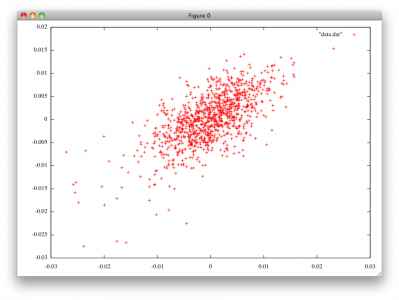
If the radio were working properly, I’d expect to see a very symmetric pattern here, but instead we see an ellipse at 45 degrees. Not good. The thing is, I’m not sure what could be going on here. I’ve hooked an oscilloscope to the divider outputs, and seem to get what I would expect (although my scope is only a 20Mhz one, and the waveforms seem a bit distorted, which could be the scope or the radio). It seems unlikely that the two divider outputs could be that far out of whack: it’s just a set of cmos dividers. My best guess is the sloppy job I may have done on the trifilar inductor that I wound as a mixer. What do you all think?
I’ll try to get some oscilloscope screenshots up here later. i am still a rookie at using the oscilloscope, and haven’t been able to get the X-Y pattern that I expect yet.
Addendum: Here’s an example showing the lack of opposite sideband cancellation. I recorded some audio and ran it through my own spectrum rendering code, each horizontal pixel is about 20ms. You can see that the power in each sideband isn’t exactly even, but that we can clearly see the same signals on both sides of the middle frequency.

Addendum2: Here’s a photo of the X-Y of the two quadrature channels. I’m somewhat confused actually about the scaling: I am getting significantly more vertical deflection than horizontal, but that result seems to hold even when I reverse the channels. That obviously can’t be right. I probably have my scope configured in some stupid way. Oh well, this is how we learn, right?
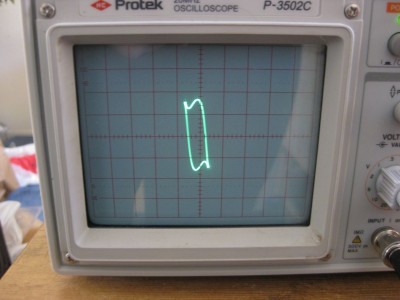
Addendum3: Yep, something is definitely wacky. Here we are in dual trace mode. You can see the amplitudes are very close to the same, although the shapes aren’t very pretty.
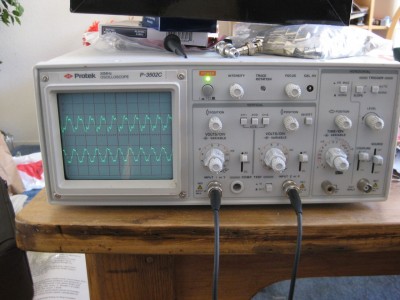
Addendum4: AK6L sent me this link, which shows what I think the waveforms should look like…

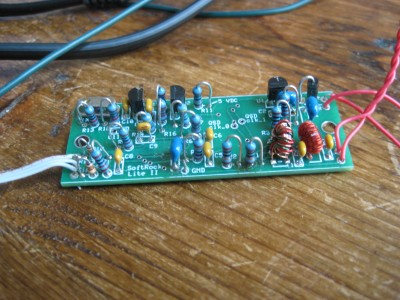
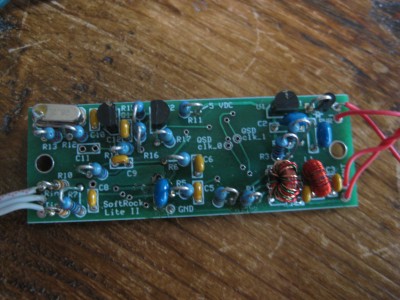
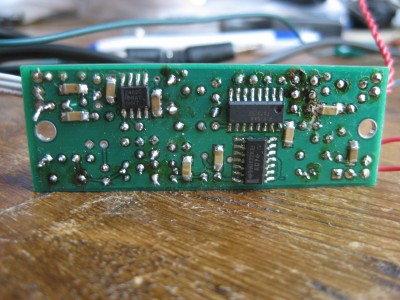





I recall burning three or four weeks of a sabbatical getting Saccade.com on the air with Wordpress. So much tweaking…